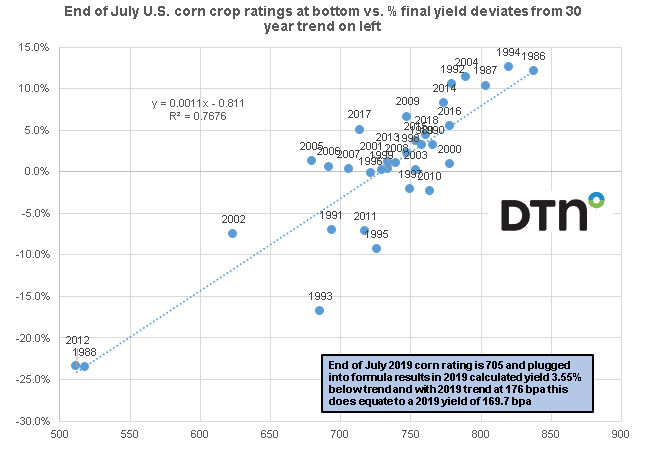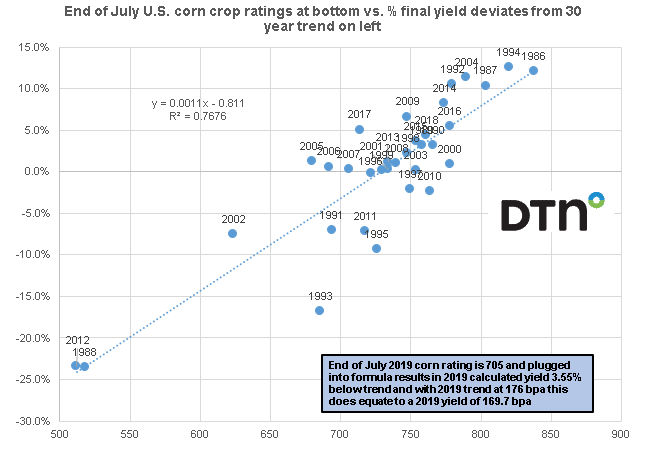Fundamentally Speaking
Corn Conditions Seem to Corroborate USDA Yield Projection
A shocker of a USDA crop report is among the mild adjectives being tossed about after the government issued a surprisingly large corn production number for 2018 based on yield and acreage, far higher than the trade had imagined.
Expectations that the slowest planting pace on record would result in a dramatic drop in both planted and harvested acreage and yields for the U.S. corn crop for now have been sunk, though the story for the 2019 U.S. corn crop is far from finished.
We will have more to say about the acreage figures in subsequent posts, but we will start by just focusing on yields.
P[L1] D[0x0] M[300x250] OOP[F] ADUNIT[] T[]
With a large part of the crop mudded in at a very late date, many producers having to use the lower yielding shorter season varieties, having a crop lacking in nitrogen and other necessary inputs due to inclement weather both last fall and this spring, and flash drought conditions prevalent over much of the Eastern Corn Belt resulting in the lowest national corm ratings as of the end of July since 2012, how is it that the USDA is forecasting yields only 3.9% below last year and the 30-year trend.
Actually, using a simple regression of end of July U.S. crop ratings and the percent that the national yield deviated from the 30-year trend comes up with a figure close to the USDA number of 169.5 bushels per acre.
Crop conditions are measured using our usual ratings system where we weight the crop based on the percent in each category and assign that category a factor of 2 for very poor, 4 for poor, 6 for fair, 8 for good, and 10 for excellent and then sum the results.
This year's end of July rating is 705, the lowest since a 512 figure was seen in 2012.
We plug that into the derived trend line formula of % deviation from trend = 0.0011 * end of July crop rating + 0.811 which results in a 2019 calculated yield 3.55% below trend and with 2019 trend at 176 bpa, this does equate to a 2019 yield of 169.7 bpa.
Note that end of July crop conditions explain about 77% of the variability of percent of yield deviation, though it is a long way until the crop is in the bin, especially with much of the crop developing very late.
(KR)
© Copyright 2019 DTN/The Progressive Farmer. All rights reserved.






Comments
To comment, please Log In or Join our Community .